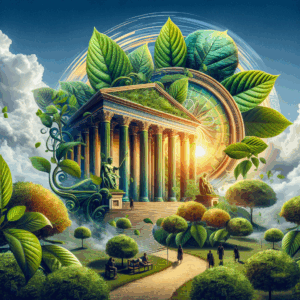Noon signifies more than just a point in time. It serves as a marker for activities, cultural practices, and even health benefits. In this extensive discussion, we explore everything that noon represents. Be it science, culture, or daily routines—you'll find comprehensive insights in the sections below.
What Does Noon Mean?
Noon is commonly defined as 12:00 PM, the moment when the sun is at its zenith. This time is crucial for many reasons. It acts as a focal point around which daily activities revolve. From scheduling meetings to planning meals, noon impacts our lives significantly.
Noon is not just a time; it's also a cultural concept. In many cultures, this hour symbolizes the shift from morning to afternoon. It traditionally represents a time for breaks, especially in workplaces. Hence, understanding noon involves both its scientific and cultural dimensions.
The Science of Noon
The Solar Noon
Solar noon occurs when the sun reaches its highest point in the sky. This is not necessarily the same as 12:00 PM on your clock. Local time can differ based on your geographic location and time zone. Each location has its solar noon, which can adjust throughout the year.
You can actually calculate solar noon using this simple formula:
- Find your longitude.
- Adjust it based on the equation of time.
- Convert to your local time zone.
For example, if your longitude is 75 degrees west, solar noon will be a few minutes later than 12:00 PM during certain times of the year.
The Role of Time Zones
Time zones add complexity to the concept of noon. The Earth is divided into 24 time zones, primarily based on its rotation and the position of the sun. This division leads to differences in when noon occurs across different regions.
For example, noon in New York (UTC-5) is different from noon in Los Angeles (UTC-8). The practical implication is that while one city enjoys sunlight, another might be dipping into twilight.
Cultural Significance of Noon
The Break Time
Noon often serves as a natural break in people's routines. In many offices, 12:00 PM marks lunch hour. Workers take this time to recharge, socialize, and refocus. This midday pause has psychological benefits. Studies indicate that short breaks can improve productivity and creativity.
Religious Practices
Noon also holds importance in various religious practices. In Islam, the midday prayer (Dhuhr) occurs shortly after noon. This practice emphasizes the necessity of pausing life's activities for spiritual connection. Other religions have similar practices, reinforcing the idea that noon serves as a moment of reflection.
Noon in Daily Life
Time Management
Understanding how to manage time around noon is essential for productivity. Setting lunch breaks, meetings, and deadlines around this hour can enhance efficiency. For those working from home, using noon as a cut-off point can help create boundaries.
Meal Planning
Noon often indicates lunchtime, making it essential for meal planning. Whether it’s a hearty sandwich or a nutritious salad, lunch fuels the second half of the day. Many people choose to incorporate healthy options that help sustain energy levels.
Here’s a quick list of easy lunch ideas:
- Wraps with fresh veggies
- Quinoa salad with grilled chicken
- Smoothies packed with fruits and greens
- Whole-grain sandwiches with lean protein
The Health Benefits of a Midday Break
Physical Health
Midday breaks contribute to better physical health. Taking a moment to stretch, walk, or even meditate can rejuvenate your body. Studies show that physical activity, even in small doses, improves overall health.
Mental Health
Taking a break at noon also benefits mental well-being. A pause helps in reducing stress and anxiety levels. Practices such as mindfulness or deep breathing can make this break more effective.
Incorporating short breaks into your routine can create a significant positive impact.
Challenges Around Noon
The “Noon Slump”
Many people experience a dip in energy around noon. This phenomenon, often referred to as the “noon slump,” can affect productivity. Factors like heavy lunchtime meals or poor sleep contribute to this slump. Recognizing its signs can help in combating its effects.
Managing Time Effectively
For those juggling multiple responsibilities, noon can be challenging. It requires effective time management to ensure productivity levels remain high. Setting priorities before lunch can make the difference.
Here are some strategies to manage time effectively:
- Plan your day the night before.
- Use timers to allocate time for each task.
- Limit distractions during peak hours.
Noon Around the World
Global Lunch Traditions
Different cultures have varying traditions around noon and lunchtime. In Spain, the tradition of “siesta” reflects a cultural shift towards maximizing energy levels. People take a long lunch break, sometimes stretching into the early afternoon.
In contrast, countries like Japan emphasize quick lunches to maintain productivity. The concept of “bento” boxes showcases the art of packing a nutritious meal that can be consumed on the go.
Table: Global Lunch Traditions
| Country | Lunch Tradition | Description |
|---|---|---|
| Spain | Siesta | Long lunch with a break for rest |
| Japan | Bento boxes | Quick, portable meals for busy days |
| Italy | Pranzo | Extended lunches, often with family |
| Mexico | Comida | Largest meal, usually followed by a break |
Noon Festivities
Various festivals celebrate noon across the globe. Some cultures have specific rituals to mark solar noon, believing it to be a time of change. For example, the summer solstice holds special significance in many cultures. It signifies the longest day of the year, where festivities often take place at noon.
Noon and Its Role in Nature
Animal Behavior
Many animals also show changed behavior around noon. Birds often reduce activity during the hottest parts of the day. This can provide insights into how other species adapt to natural rhythms. Understanding these behaviors might help in nature conservation efforts.
Plant Life
Plants, too, demonstrate unique responses to noon. Photosynthesis reaches its peak during this time, aligning with the sun's intensity. Understanding these processes is crucial, especially for agriculture. Farmers often schedule irrigation and harvest based on the sun's position.
Conclusion: Embracing Noon
In summary, noon represents a multifaceted concept. It impacts our daily lives, cultural practices, and even natural behaviors. Being mindful of this key moment can enrich your life. Enjoy that midday break, reflect on your goals, and recharge. Noon is more than just a time; it’s a marker of potential and opportunity.
FAQs
What is the exact time for solar noon?
Solar noon varies by location and time of year, generally around 12:00 PM local time.
Why does noon feel like a busy time?
People often schedule meetings and deadlines around noon, making it a high-activity time.
How can I avoid the noon slump?
Staying hydrated, taking short breaks, and managing your lunch can help combat energy dips.
What are common lunchtime rituals in different cultures?
Lunchtime varies greatly; some cultures enjoy long meals while others prefer quick snacks.
How does noon affect productivity?
Taking scheduled breaks at noon can improve focus and mental clarity in the afternoon.
Is noon the best time for physical exercise?
While it can be beneficial, many choose mornings or evenings for exercise when energy levels are higher.
How can I use noon to better structure my day?
Planning tasks with breaks around noon can maximize productivity and energy.
Do animals behave differently at noon?
Yes, many species change their activity levels, often resting during the hottest part of the day.
What is the significance of noon in religion?
Noon plays a vital role in various religious practices, often associated with prayer or reflection.
How do plants react to sunlight around noon?
Plants undergo peak photosynthesis during noon, making it a crucial time for growth.







